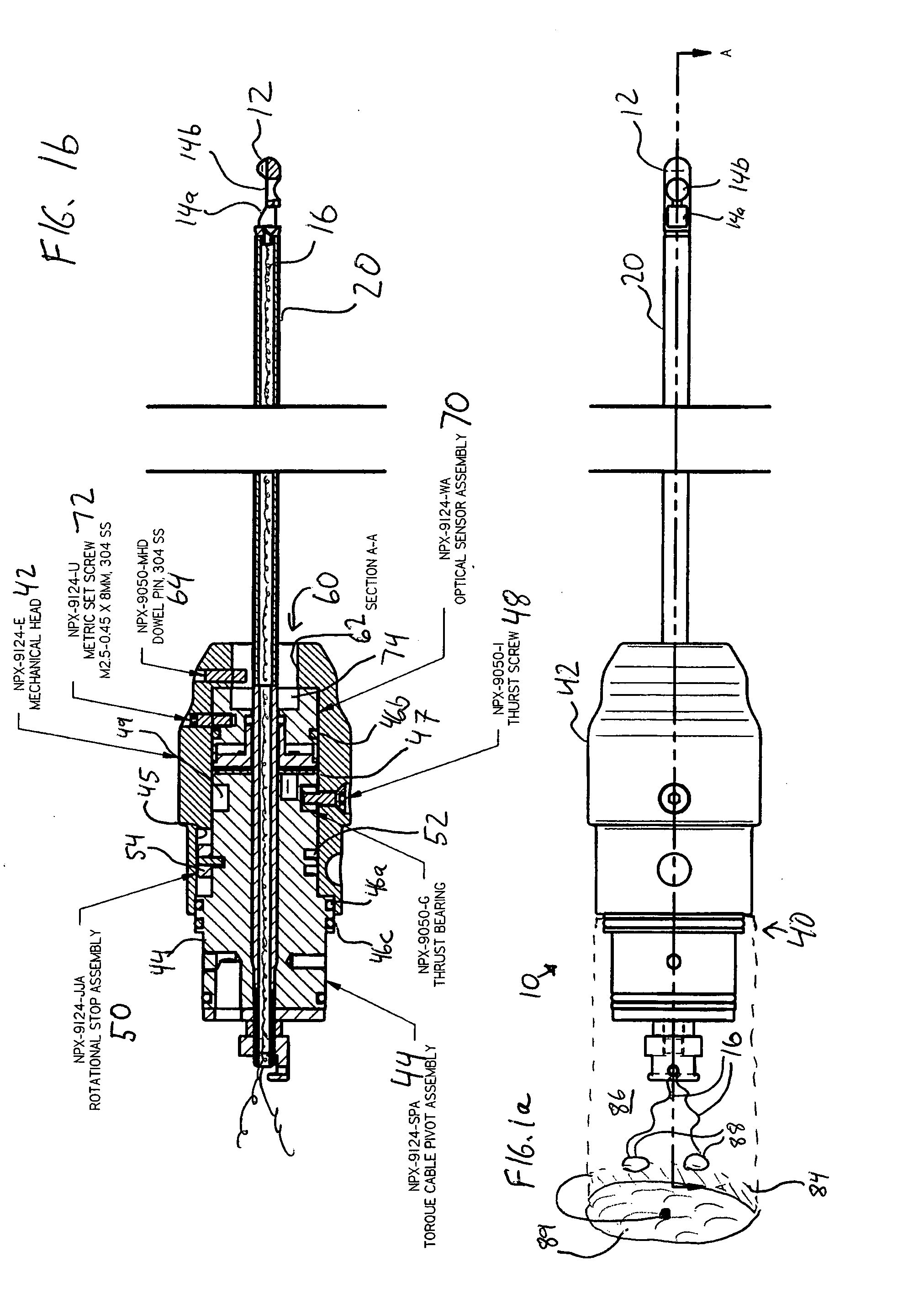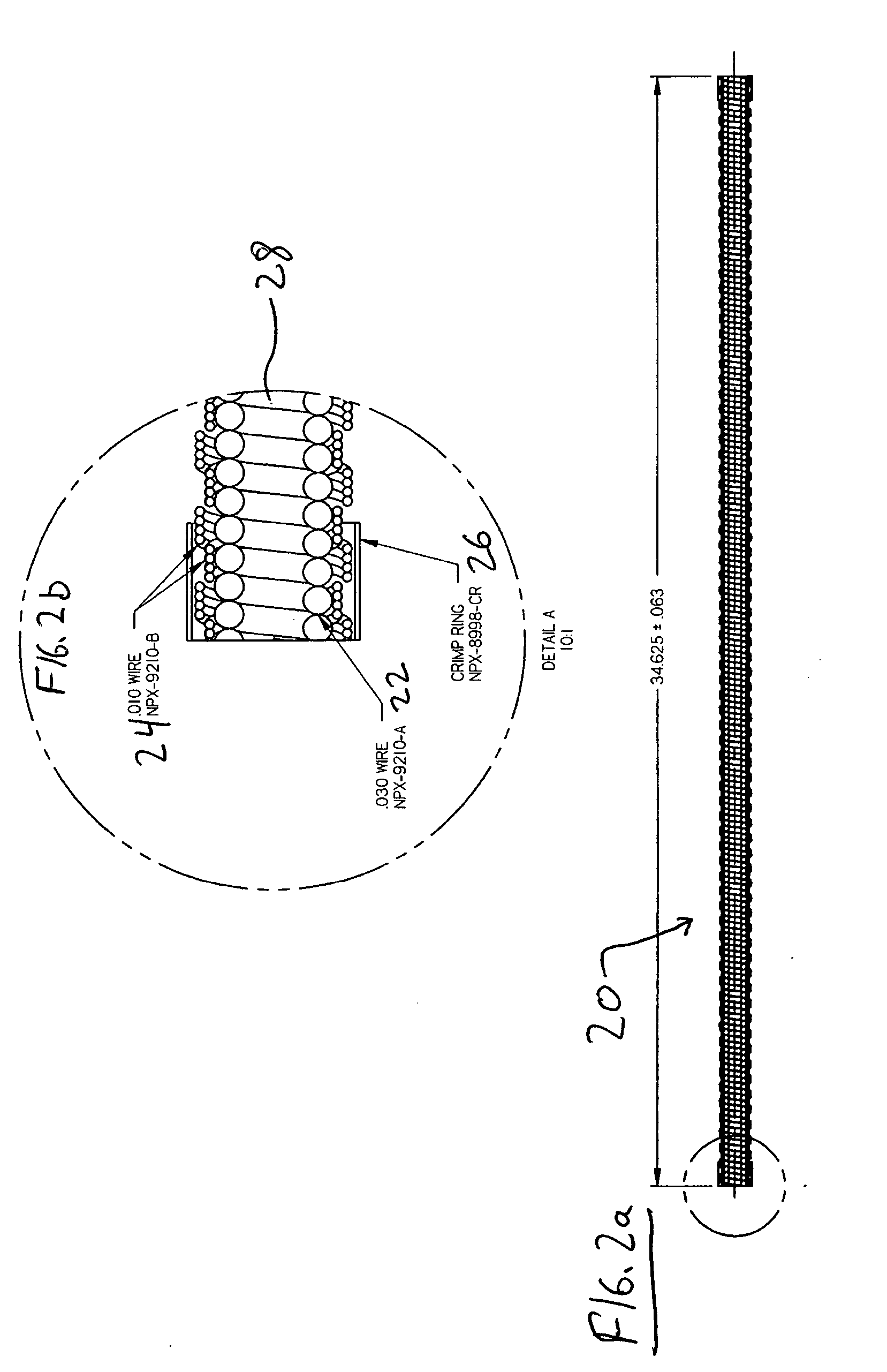Intracorporeal probe with disposable probe body
- Summary
- Abstract
- Description
- Claims
- Application Information
AI Technical Summary
Benefits of technology
Problems solved by technology
Method used
Image
Examples
Embodiment Construction
[0046] As shown in FIGS. 1a and 1b, an embodiment of probe 10 of the present invention is shown. Transducer cage 12 is at the distal end of probe 10 and is connected via sensor cable 20 to base 40 at the proximal end of probe 10.
[0047] Transducer cage 12 is preferably metallic and has a generally bullet-shaped cylindrical profile preferably having a cross sectional diameter of about 5 millimeter (mm) or less, which houses sensing elements 14a and 14b. Transducer cage 12 may also be provided with one or more grooves to facilitate distribution of ultrasonic gel over sensing elements 14. When probe 10 is to be used in place of a Swan Ganz Catheter for monitoring left ventricular function, the sensing elements are preferably crystal ultrasonic transducers, with sensing element 14a arranged at an angle which is offset 60 degrees relative to the angle of sensing element 14b. Transducer conductors 16 respectively carry electromagnetic signals to and from the sensing elements 14a and 14b, ...
PUM
 Login to View More
Login to View More Abstract
Description
Claims
Application Information
 Login to View More
Login to View More - Generate Ideas
- Intellectual Property
- Life Sciences
- Materials
- Tech Scout
- Unparalleled Data Quality
- Higher Quality Content
- 60% Fewer Hallucinations
Browse by: Latest US Patents, China's latest patents, Technical Efficacy Thesaurus, Application Domain, Technology Topic, Popular Technical Reports.
© 2025 PatSnap. All rights reserved.Legal|Privacy policy|Modern Slavery Act Transparency Statement|Sitemap|About US| Contact US: help@patsnap.com



